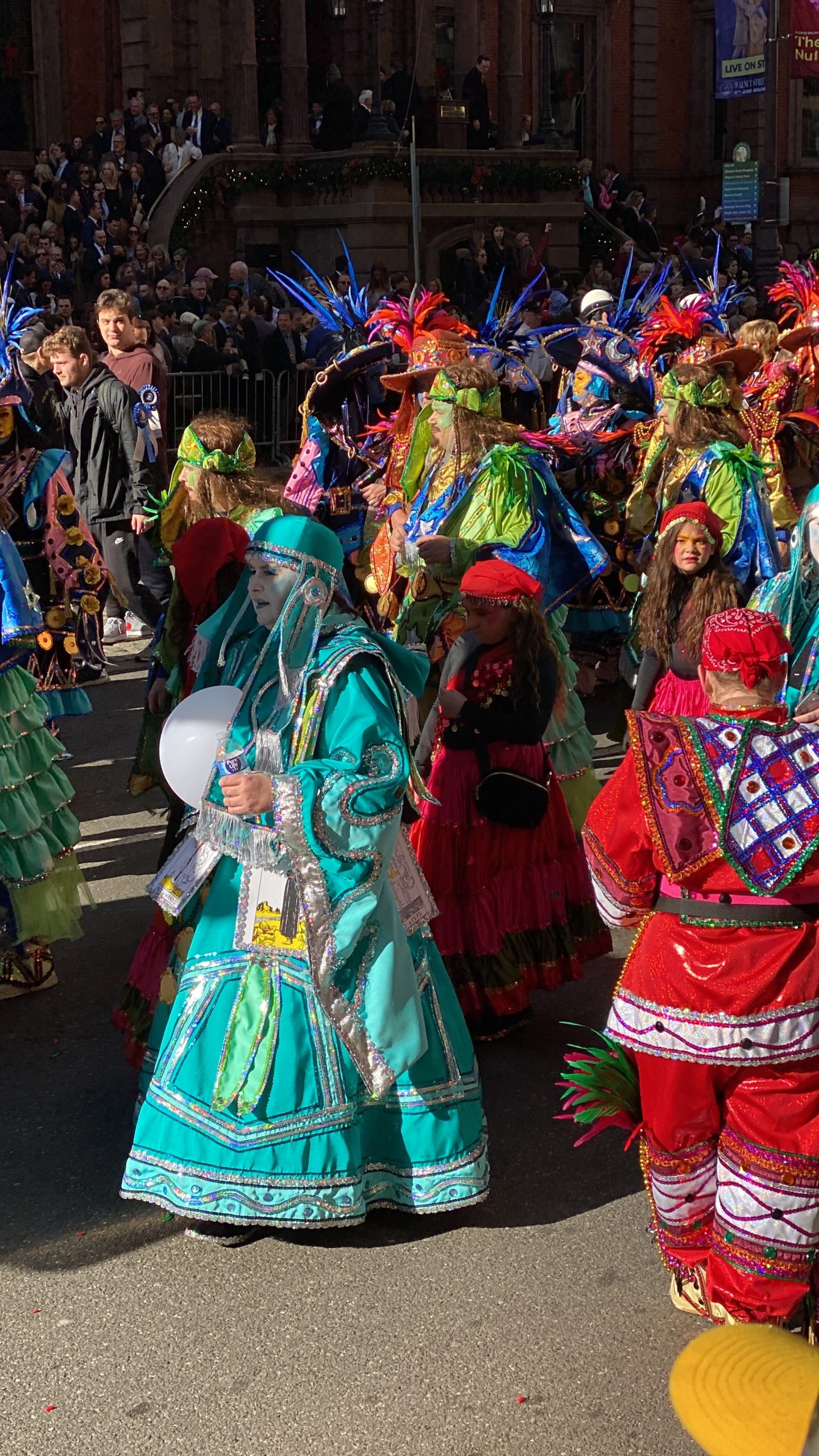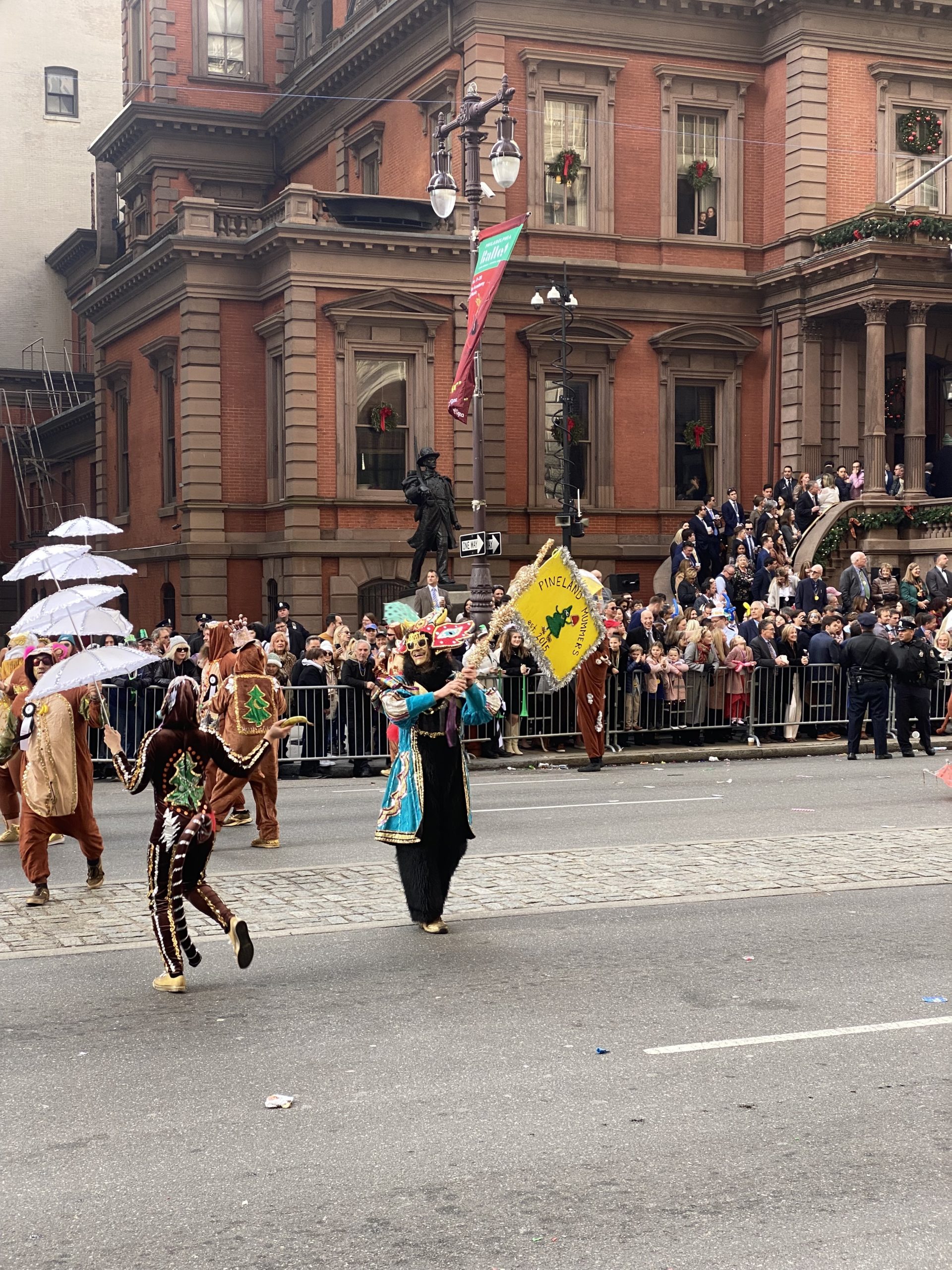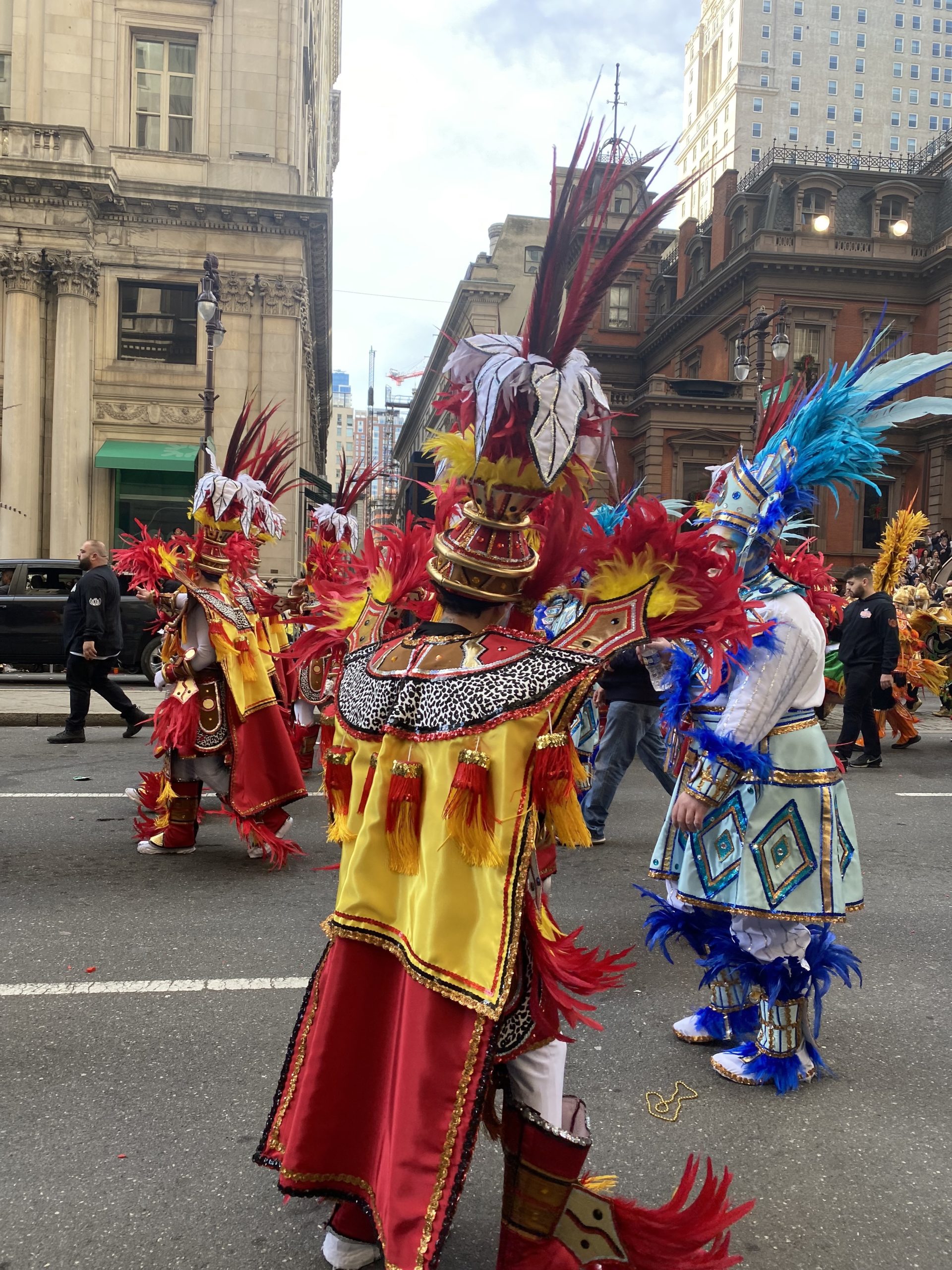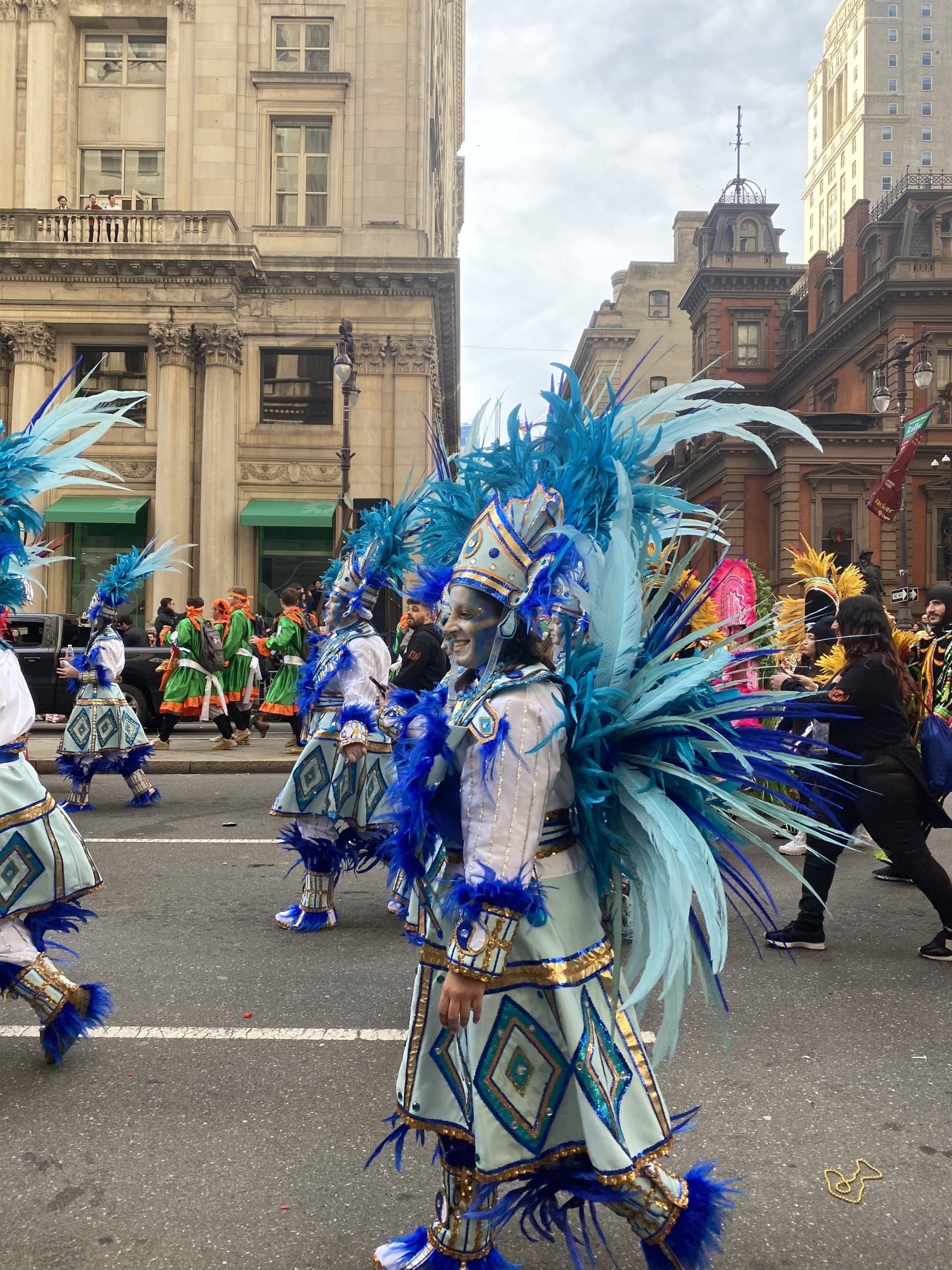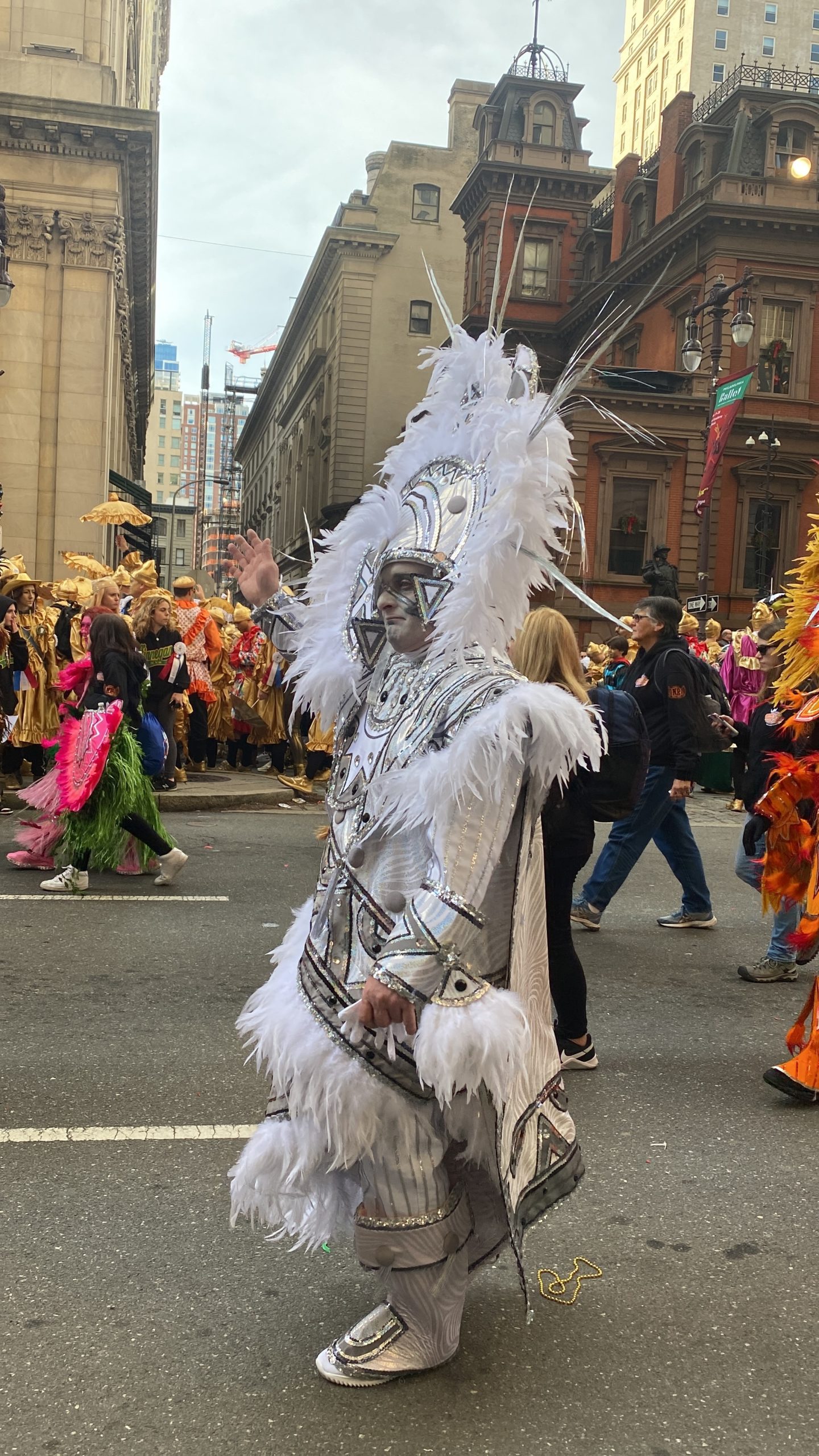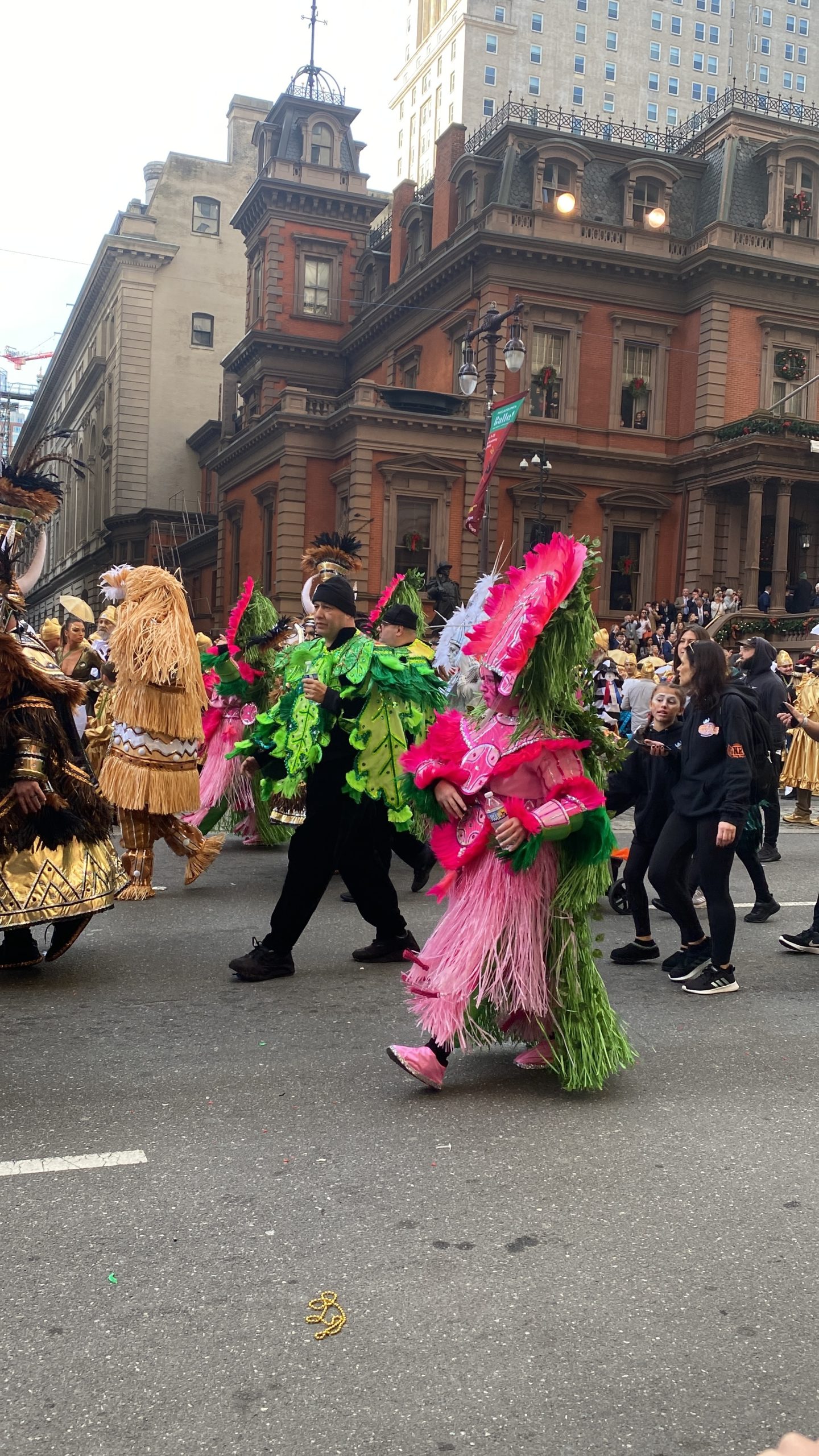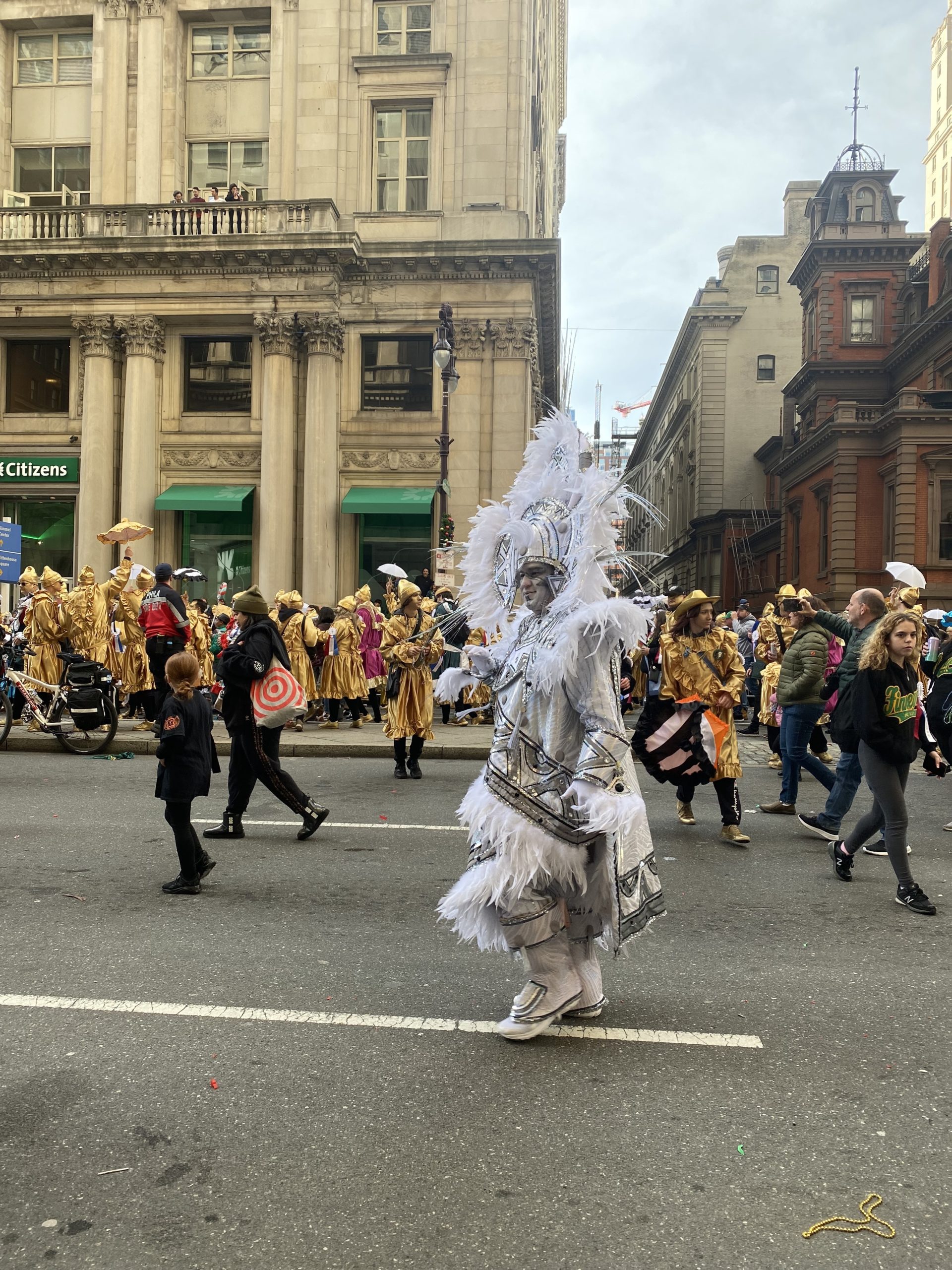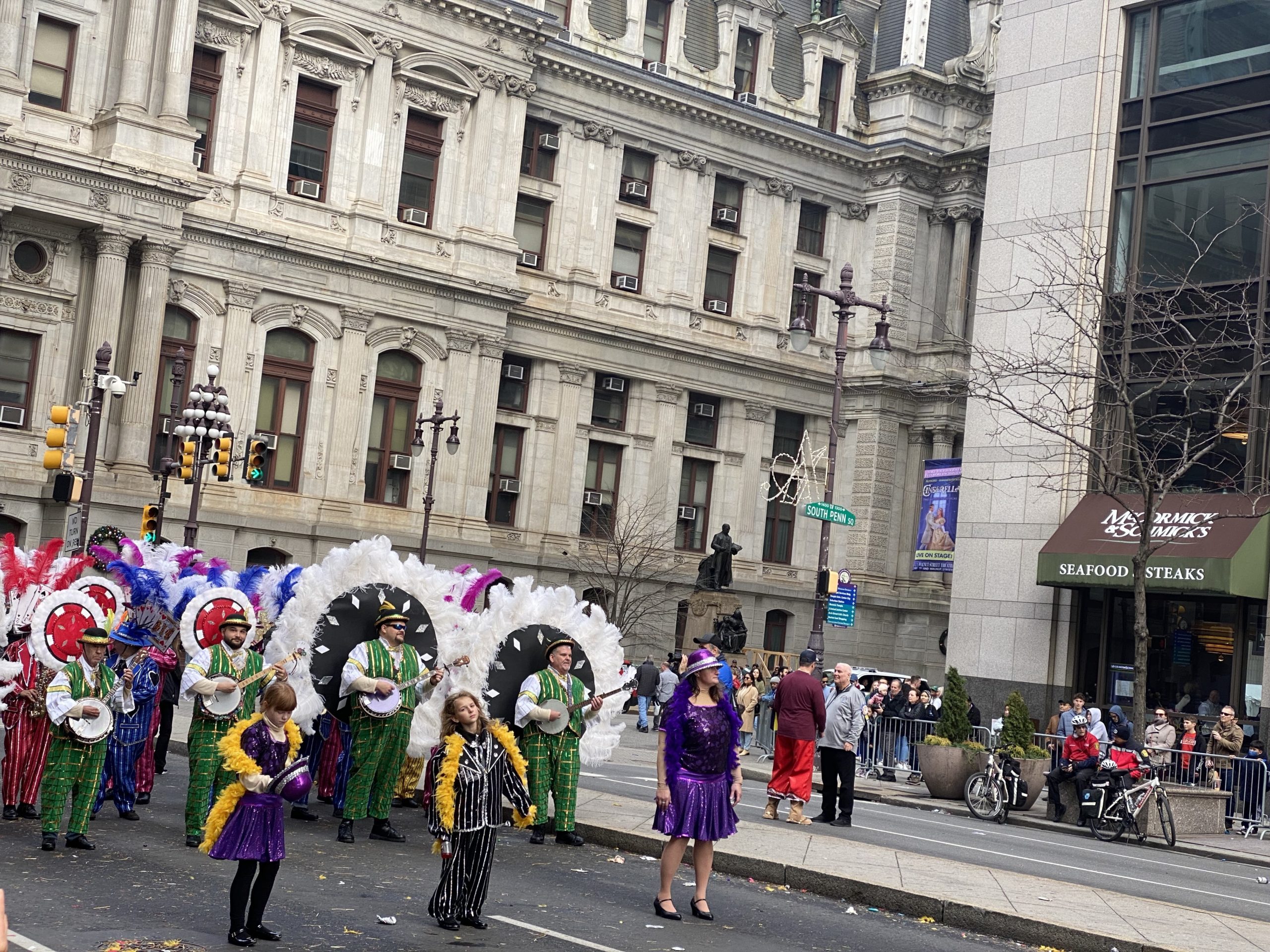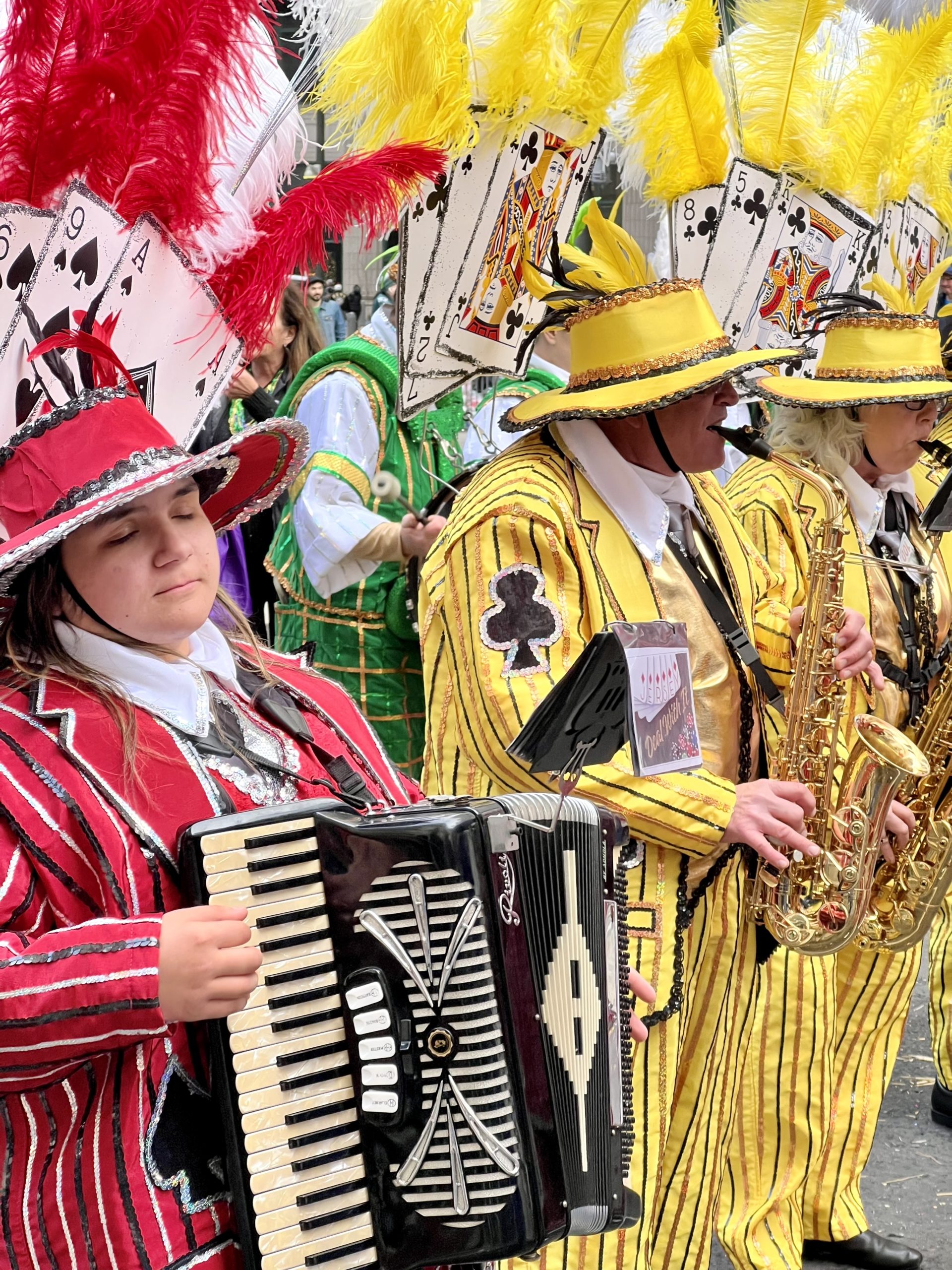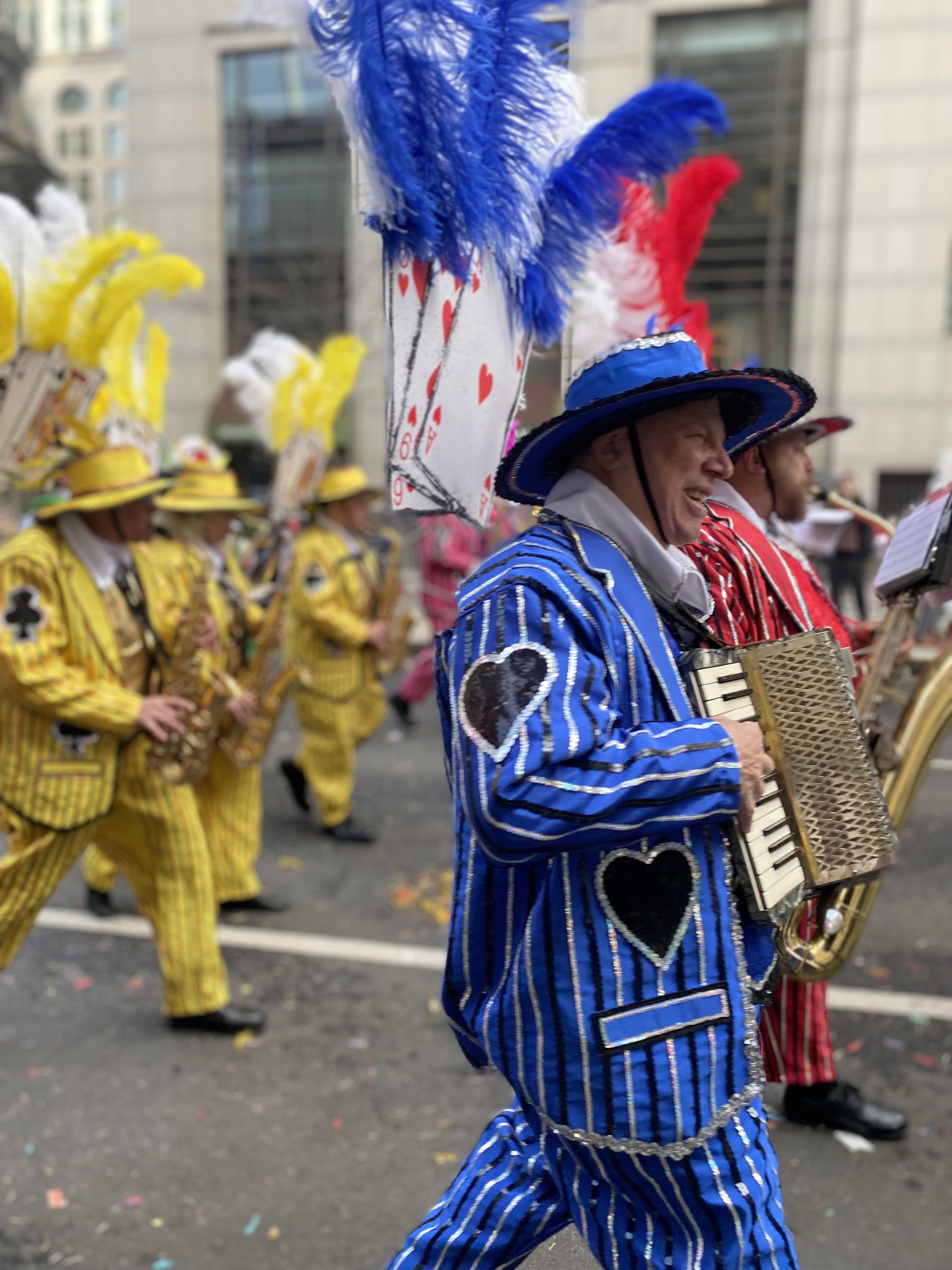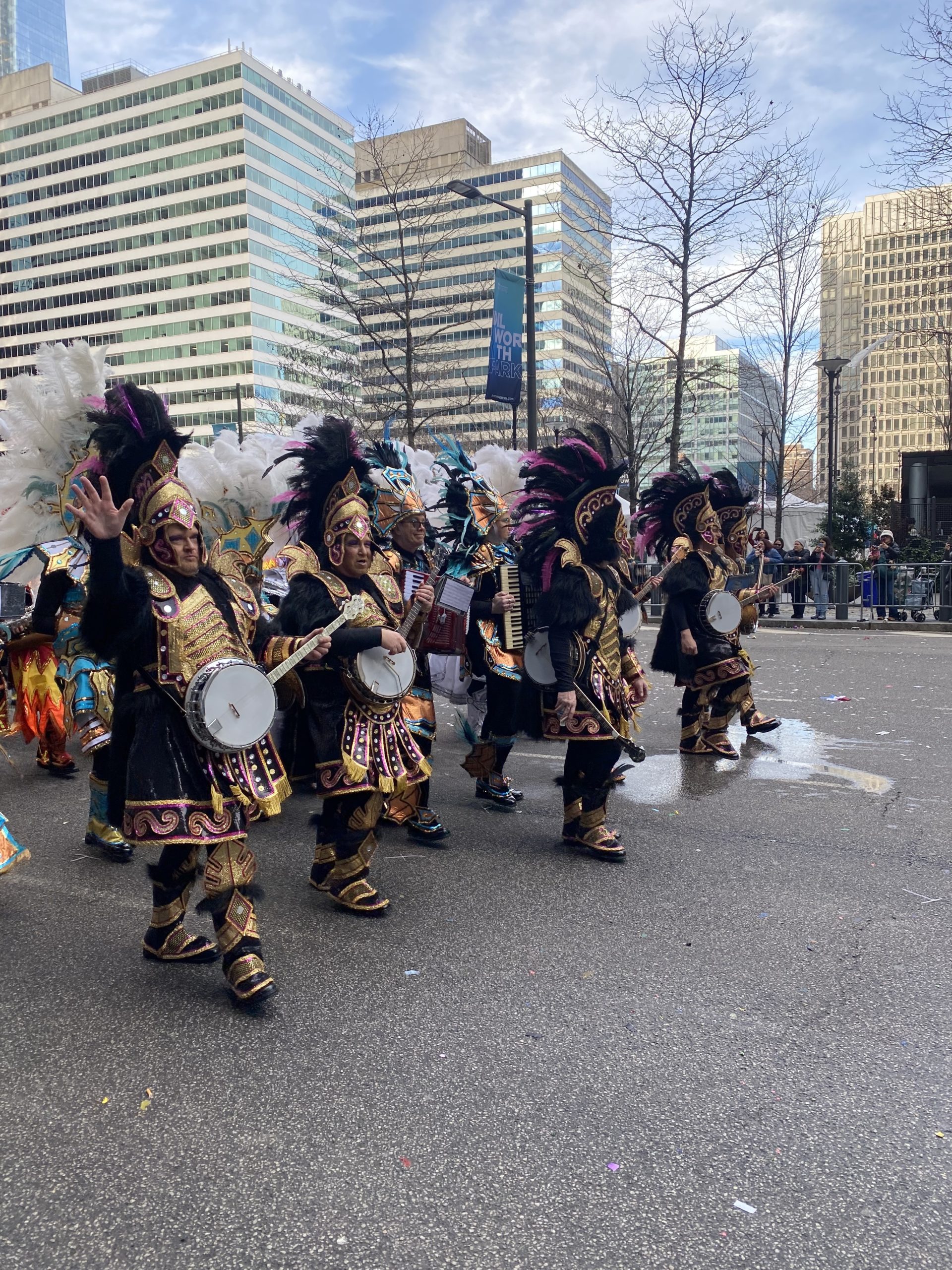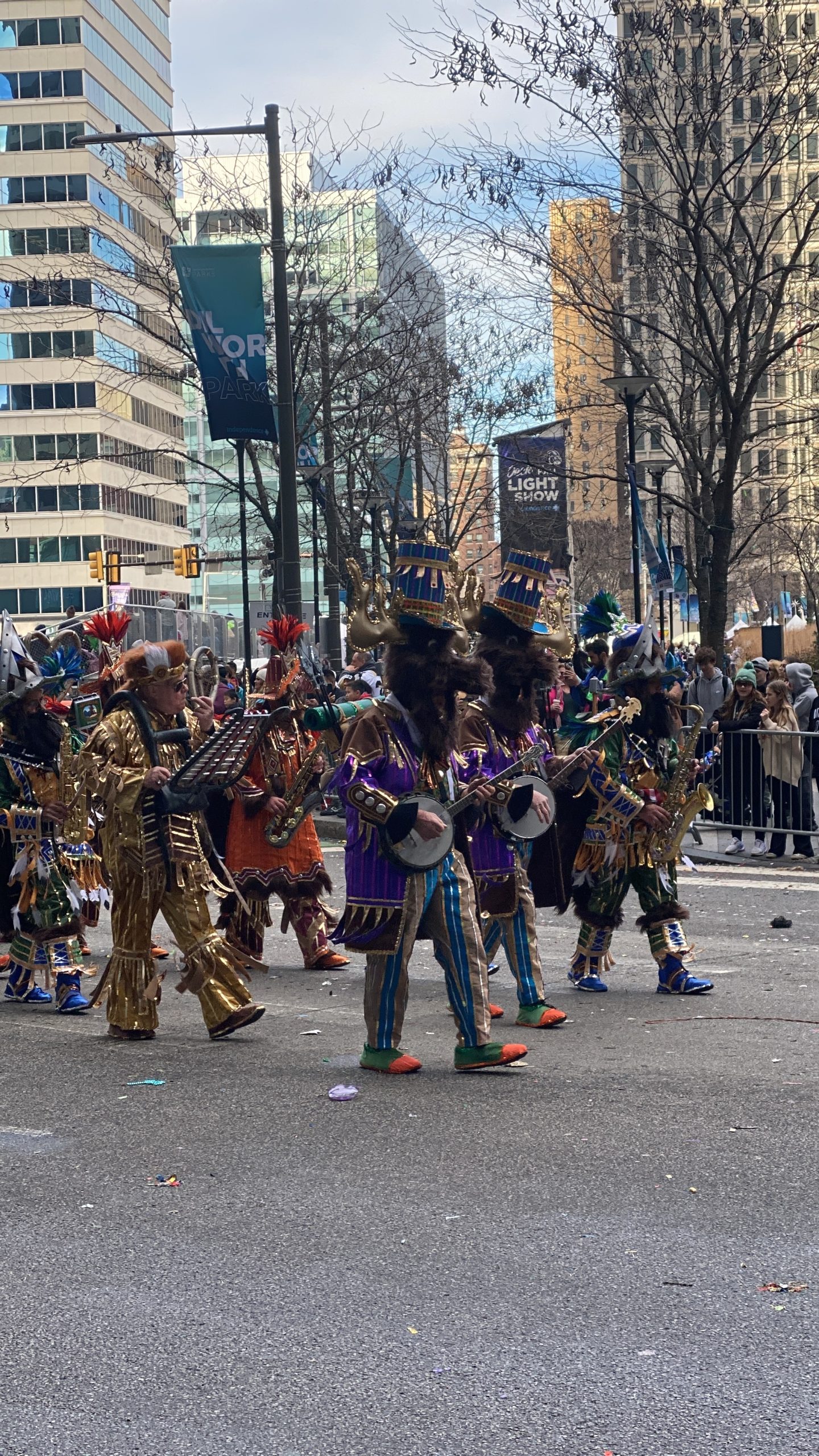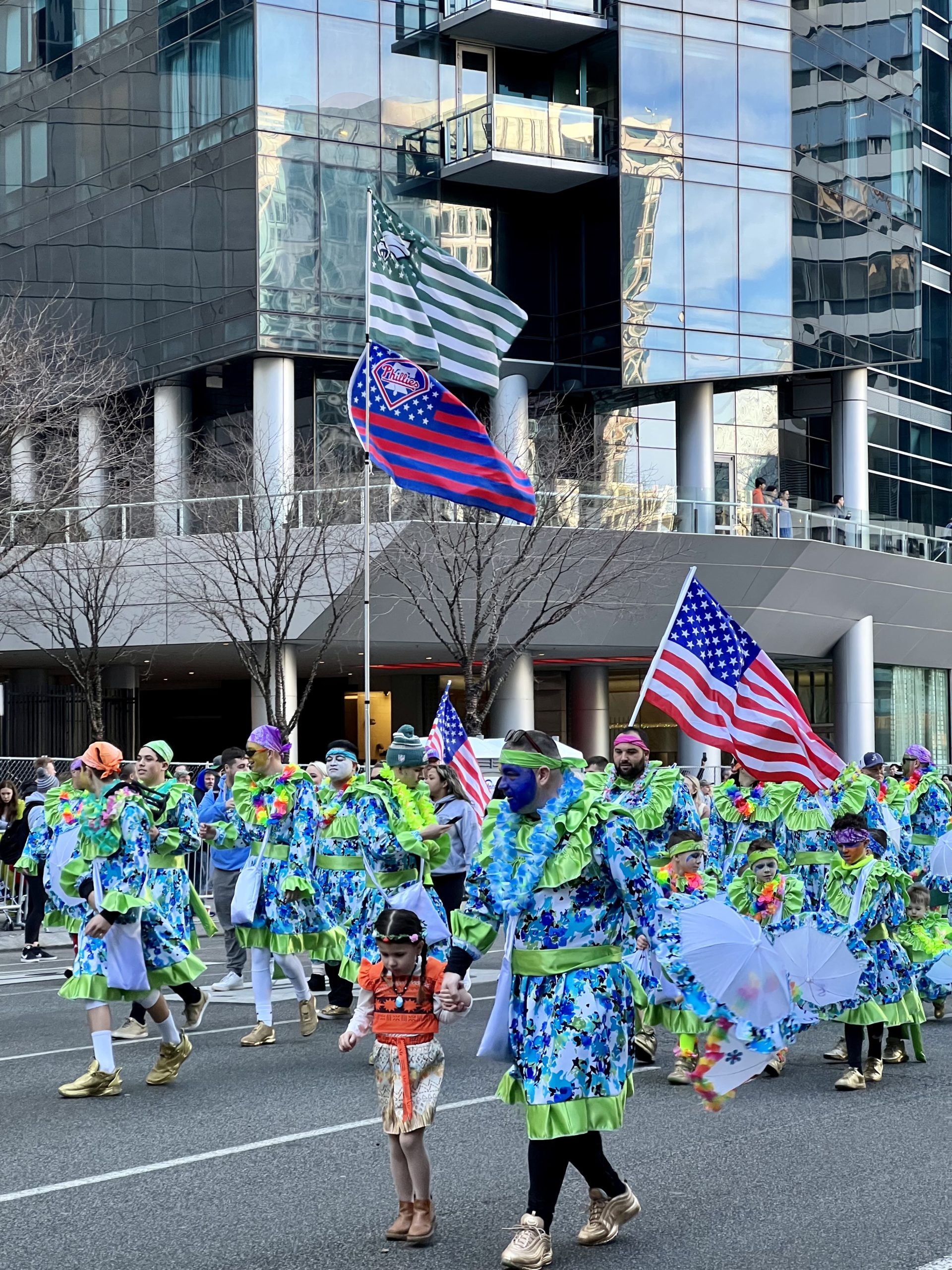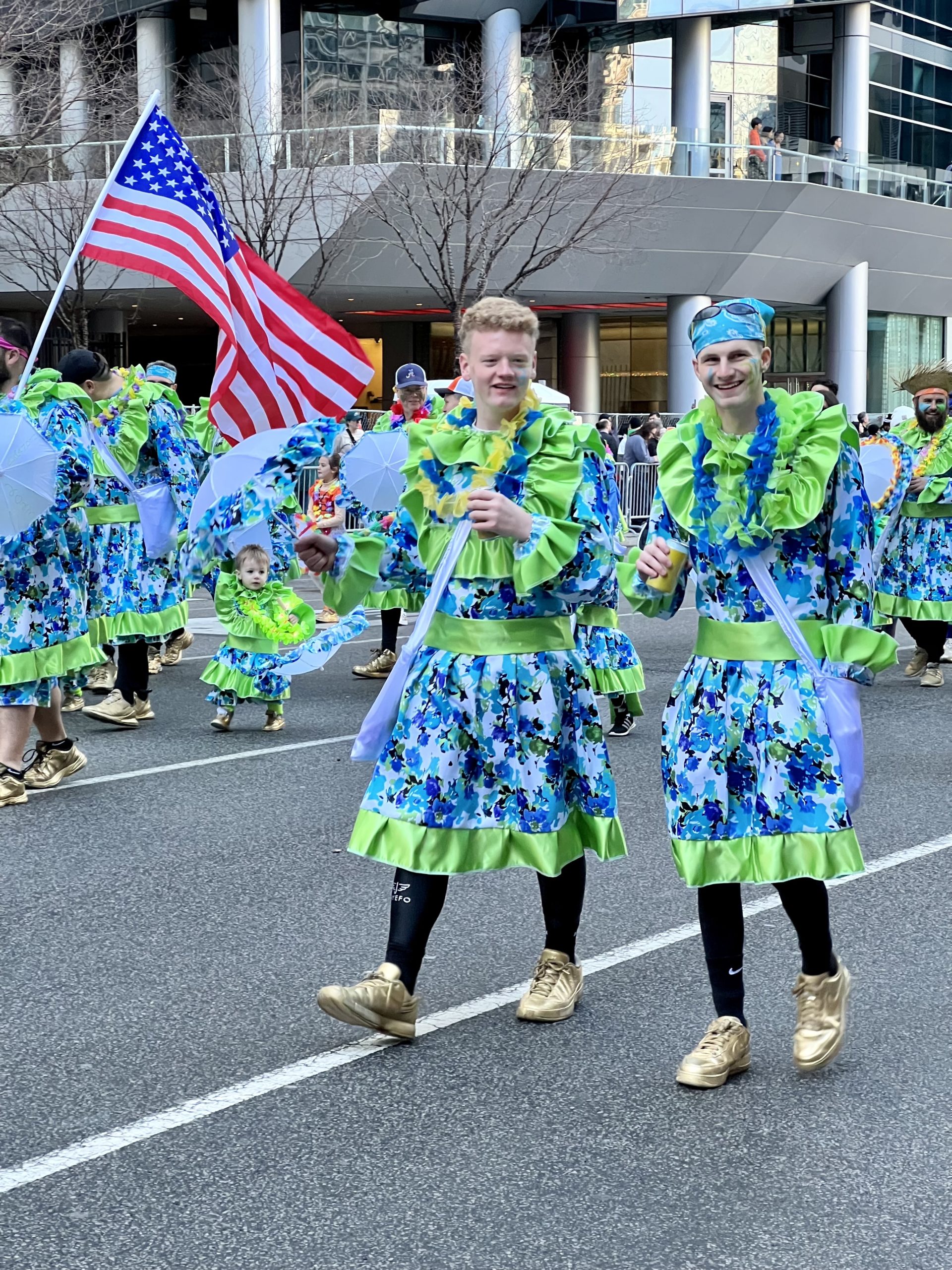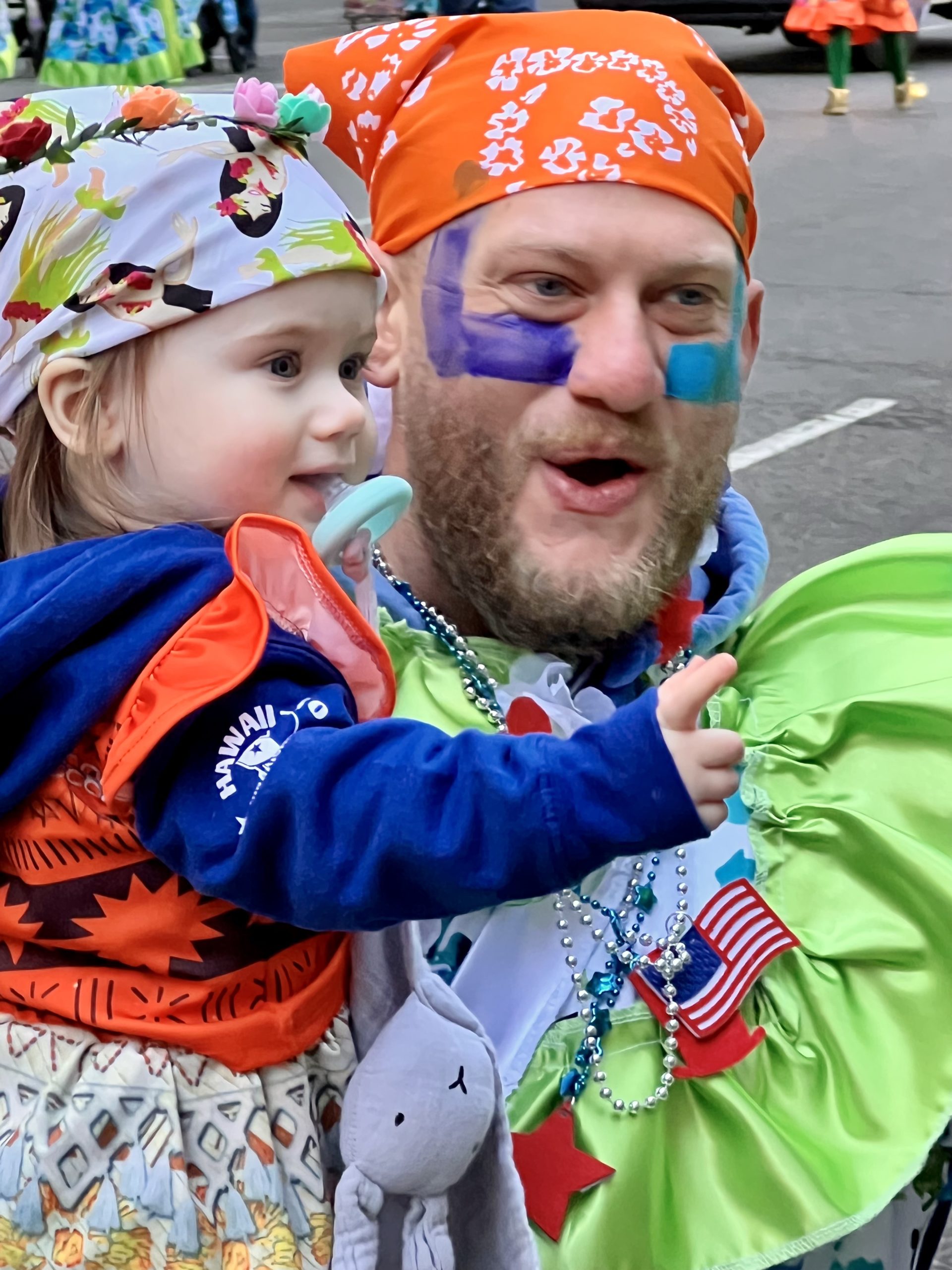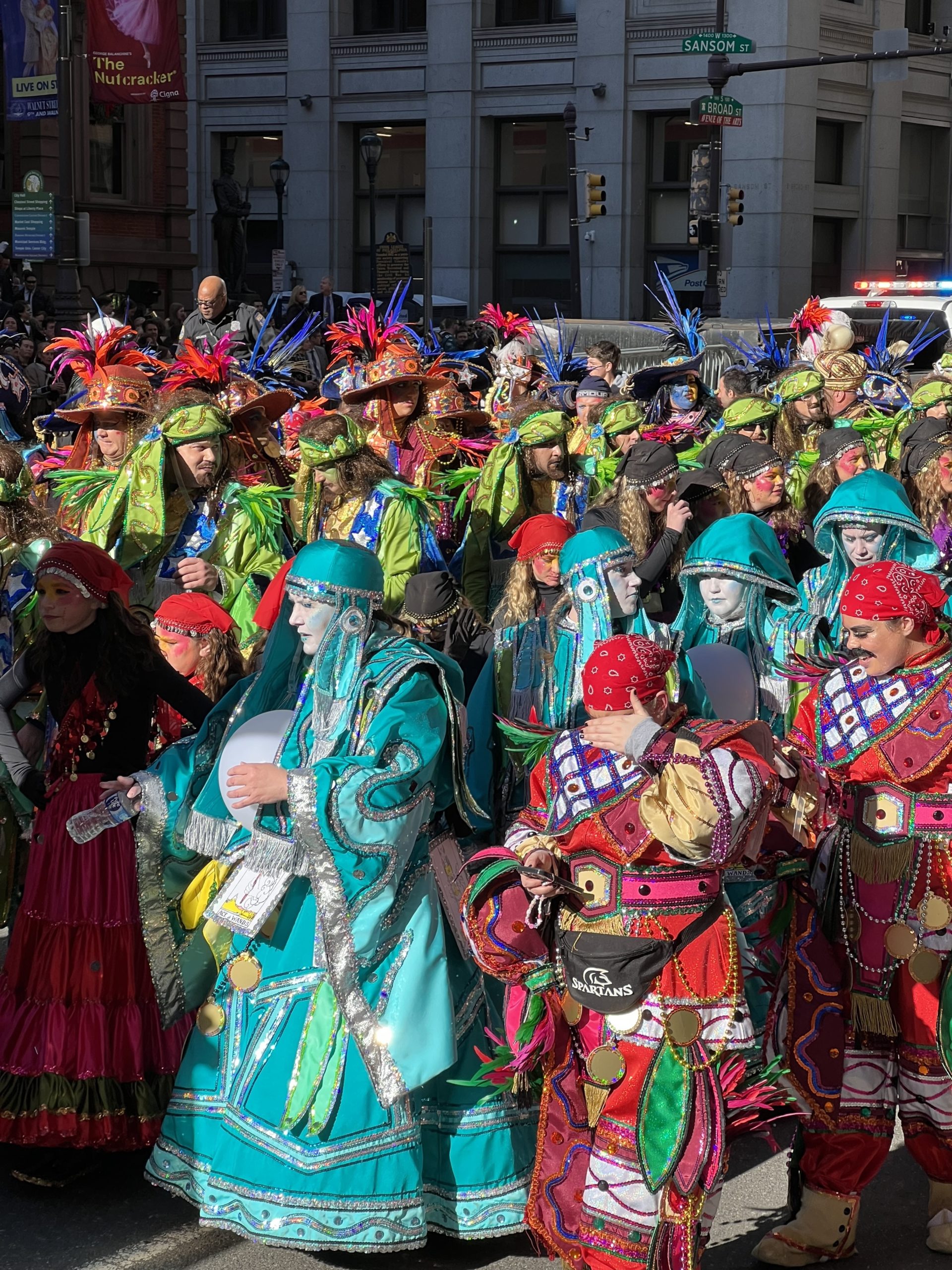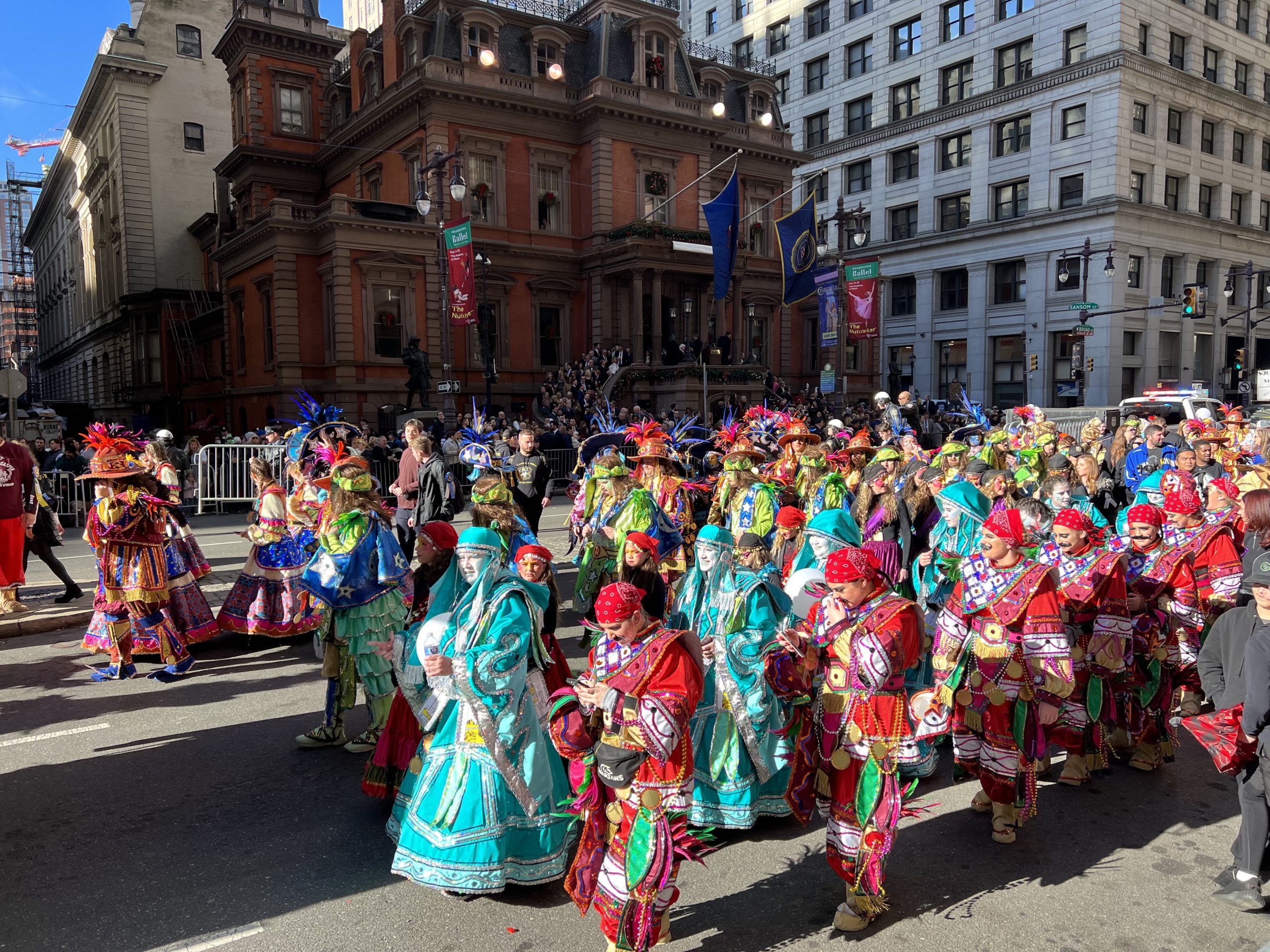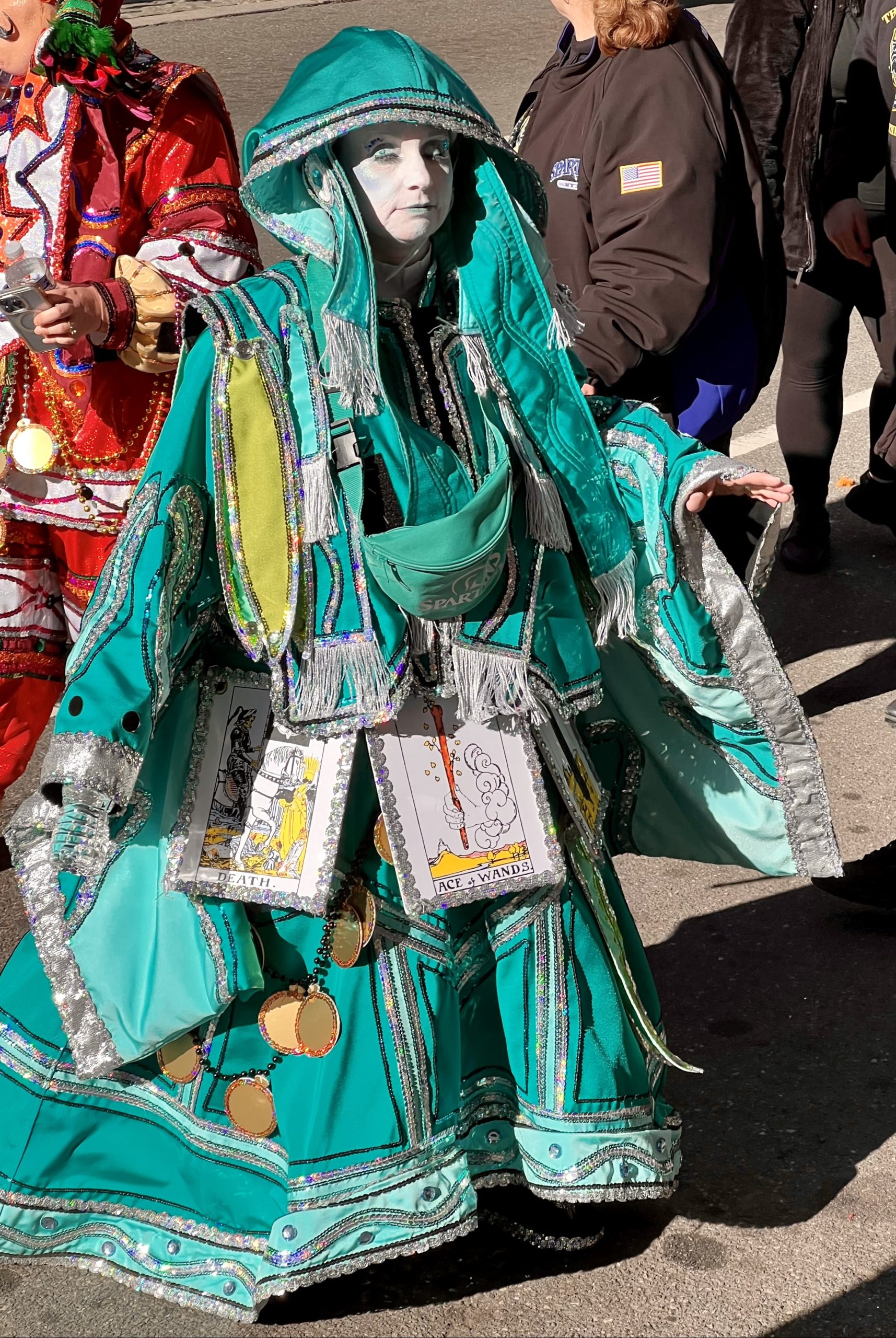PHILADELPHIA, Pa. – A sea of dancing umbrellas is held aloft by men in colorful dresses and gold shoes, inviting the New Year with drinking, dancing, shouting, and singing today in Philadelphia. The city of Brotherly Love begins each new year with a tradition older than America, the Mummers Parade. But what most people don’t know is this tradition predates Christianity, as well.
“Here we stand before your door,As we stood the year before;
Give us whisky, give us gin,
Open the door and let us in.”
Traditional; ‘A Mummer’s Poem’ found on the wall of The Mummers Museum, Philadelphia
The word ‘mummer’ is derived from Momus, an ancient Greek personification of satire and mockery, a character role written into plays Sophocles, Aesop, and others. More recently, it comes from the British and Celtic tradition of mommers or mummers, when men would dress in colorful masks and costumes – usually pantomime-inspired crossdressing – and visit their neighbors demanding alcohol or soup in exchange for a skit performance for the Winter Solstice.
As Loreena McKinnit memorialized in “The Mummer’s Dance,”
“A garland gay we bring you here, and at your door we stand”
These traditions began in Britain, Ireland, and across northern Europe. While the tradition has died down in its mothering countries, the immigrants who brought mummery to the United States in the late 1600s kept it alive by spreading the tradition to neighboring immigrant communities.
The first mummer’s parade is said to have been held by the British as a celebration of General Howe’s departure from Philadelphia in 1778. During the American Revolution, Philadelphia’s mummers were in full enough swing for George Washington to declare the activity as a new year celebration all seven years he lived there. By the 1860s, a parade gradually became the norm: a byproduct of the growing number of individual groups being created.
The first city-sponsored Philadelphia Mummers Parade was in 1901, and the parade is part of generations of Philadelphia and surrounding areas’ New Year’s Day celebrations, in person and on TV. It’s not uncommon to see several generations of mummers marching together, and many carry tributes to fallen mummers of past generations along with them on their route. One gentleman had a sign saying this was his 70th parade, while many infants were rolled along in strollers, or toddlers danced between their parents.
There are over 15,000 people who march on New Year’s Day, in four different categories of mummers. Each category can have any number of groups, and some of the groups are as large as 100 people. Each group will have a theme – this year’s themes ranged from “The Working Man is a Sucker,” a comic group dressed as candy and lollipops; to simpler topics like “Pirates”; to hybrid themes like “How the Frogs Stole Christmas,” which connected Dr. Seuss’ character of the Grinch and frogs.
The first of the four categories is the Comics, an homage to Momus. They perform skits, just as the original mummers did, and throw mardi gras-style plastic beads at the parade goers – an allusion to the Pagan ‘garlands’ offered to the homes visited by Europe’s mummers in the past.
The second group is the Fancy division, and they too dress to a theme but often include a float as well, and their own musicians. A holdover from British pantomime performances, where men play women characters on stage, this group is often called the Wenches. Groups wear dresses and carry matching umbrellas as they perform some signature dance moves, such as the ‘Mummers Strut,’ and songs, such as “Oh! Dem Golden Slippers” at intervals along the parade route.
The last two divisions are more musically inclined. String Band performances, bands led by banjo players, compete with elaborate floats, set pieces, and props. And last, but most impressively, the Fancy Brigades perform. Tickets start at $28 to view their competition performances. They are a combination of the Fancies and the String Bands, utilizing floats, music, large numbers of participants and incredible performance aides. One group this year even released dozens of birds into the crowd in coordination with their performance.
Mumming represents the lighthearted, Pagan past of celebrating the turn of the wheel. Raucous and rowdy, they joyously invite the new year, recalling the free and flowing energy of ancient celebrations. Mummers are part of a deeply rooted, thriving tradition: they are carrying the legacy of pagan Scandinavian villages, British hamlets, and even ancient Greek theaters with them on their dance down Broad Street. Mummery is in many ways more popular than ever, with thousands of participants across several generations each year – and those golden shoes show no sign of stopping their strut.
The Wild Hunt is not responsible for links to external content.
To join a conversation on this post:
Visit our The Wild Hunt subreddit! Point your favorite browser to https://www.reddit.com/r/The_Wild_Hunt_News/, then click “JOIN”. Make sure to click the bell, too, to be notified of new articles posted to our subreddit.


